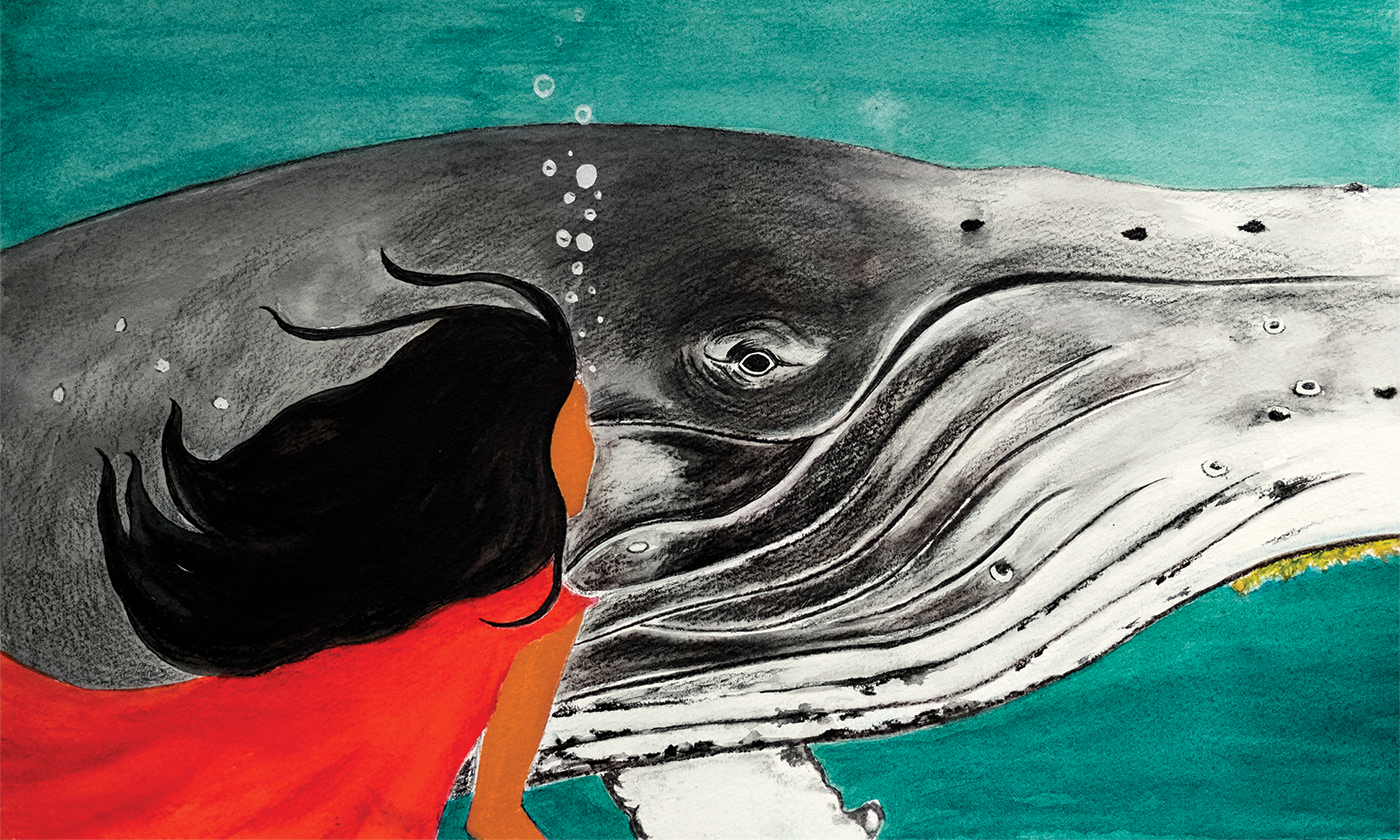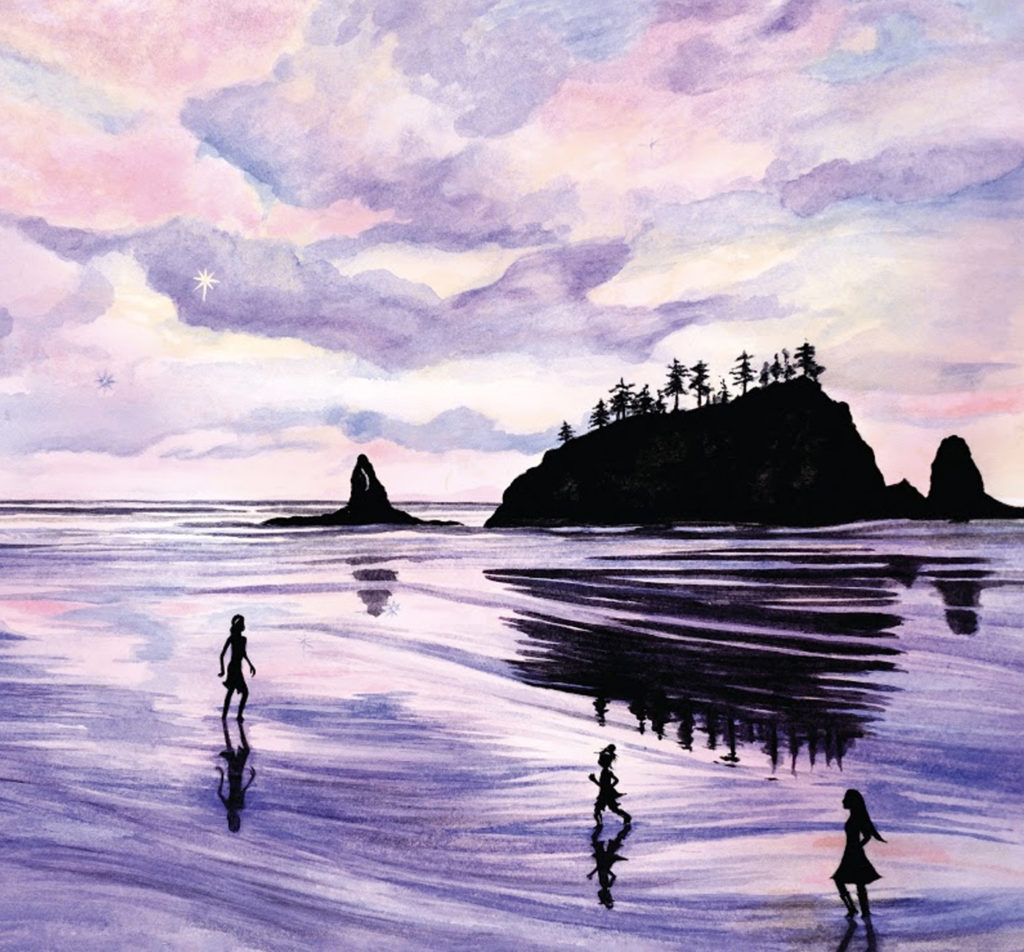In “The Whale Child,” Environmental Lessons from the Deep

In our world today there lives a whale child, born not so long ago in the waters of the South Pacific Ocean. You may have seen him from the shore, off in the distance, swimming with his mother. Like all children, he came into the world with kindness in his soul, an eagerness to learn, and the open mind of a newborn. He arrived with the strength of all the ancestors who came before him, and many other gifts yet to be realized.

His name arose from the movements of the great sea and the light reaching down through the water, sparkling beneath the waves, though it is a name that cannot be pronounced with our human voices. Sunlight dances, shines, and shimmers upon the water’s surface as the whale child passes, and when he is close, the countless creatures of the world’s oceans feel hope within the currents made by the movements of his fins. And they all sense he is special. Bright light twinkles within the inky blackness of the whale child’s eyes, as if the stars came down from their home in the night sky to rest there in his gentle gaze.
From the earliest days of his life, the whale child’s mother taught him the language of the sea through timeless songs that carry the stories and wisdom of life on Earth. She told him how water is the source of life.
Not only the dark and salty water of their ocean home, but the water that flows sweet and clear over the land; the water that sits in still lakes, ponds, and marshes; and the water that falls down to us from the sky… all of these many pathways joining together to create the living veins of our planet.

“Listen and remember,” said the whale child’s mother. “The Earth’s waters are sacred, as all living things must have water to survive. Listen and remember … all creatures of the ocean were healthy and strong, back when clean waters could carry a song to the ears of others far away in bountiful oceans through dark night and bright day. But now, I will show you things that are happening in the sea and on land. And you, my child … you will share what you learn.”
The whale child remained with his mother in the warm southern waters of his birth until he had built up plenty of insulating fat for the icy Arctic. Then his mother led him on the long journey north, and there they spent the spring and summer months in the cold northern waters, swimming along the coastline by glaciers and sea ice. There they fed on small fish, plankton, and tiny shrimp called krill that appeared within the ocean in groups as large and numerous as clouds in the sky. She taught her child to swim straight up toward the surface beneath the swirling schools of krill, using the brushy filters that whales have in their mouths, called baleen, to filter the tiny creatures from the water. She also taught him to stay clear of ships and boats that could strike and kill a whale. She taught him to recognize and stay clear of fishing nets that could entangle a whale’s body and fins. At all times she kept her baby close by her side, often reaching out and touching him with a giant flipper to make sure he was close and protected.
To the whale child, the beauty and abundance of his world were endless as he glided through the water, never far from the protective shadow of his mother. He was safe and happy, and he would show his joy in the same way he’d seen his mother and other whales do, by launching himself clear of the surface and crashing back down with enormous, thunderous splashes.
The whale child and his mother traveled great distances, following their migratory paths, back and forth between the warm blue waters nearer the equator and those that were dark green and very cold farther north. Along the way, his mother began showing him things happening to their ocean world because of the people who lived on the land. Along the way, she showed him how things were changing.

One evening, off the coast of the Pacific Northwest, a pod of orcas passed with soundless speed, racing smoothly toward the next hunting ground. And here, not far from shore, the whale child and his mother decided to rest for the night. And it was here that the whale child asked his mother, “What things have I learned? What things will I share?”
“Do you know how to survive?” his mother answered. “And do you know what things you need in order to continue surviving? Do you remember all that you’ve seen on our travels?”
“Yes,” nodded the whale child.
“Then you also know what all other living things need to survive. And there is more you know that you have not yet considered or remembered.”
This excerpt from The Whale Child by Keith Egawa and Chenoa Egawa (North Atlantic Books, 2020) appears by permission of the authors and publisher.
Read an interview with the authors of The Whale Child here.
|
Keith T.A. Egawa
is a novelist who focuses on both adult and children’s literature. He is a Washington native and a member of the Lummi Indian Nation. Egawa’s extensive experience in the field of child welfare has provided him with both inspiration and insight into his subject matter.
|
|
Chenoa T.Y. Egawa
is Coast Salish of the Lummi and S’Klallam Nations of Washington state. She is a medicine woman, singer, writer, illustrator, photographer, and teacher dedicated to bringing healing to our Mother Earth and to people of all origins. She is a voice to bring Native wisdom and perspectives to the world when these teachings are particularly poignant reminders of our shared responsibility to live with respect for ourselves, one another, and all that gives us life.
|







